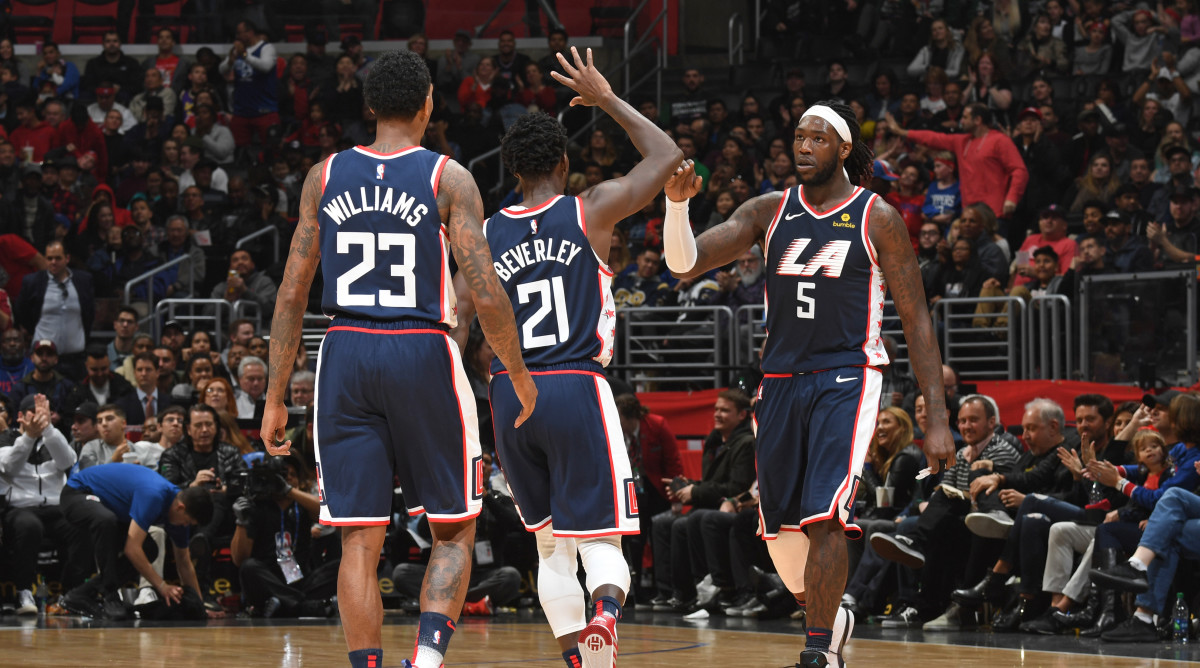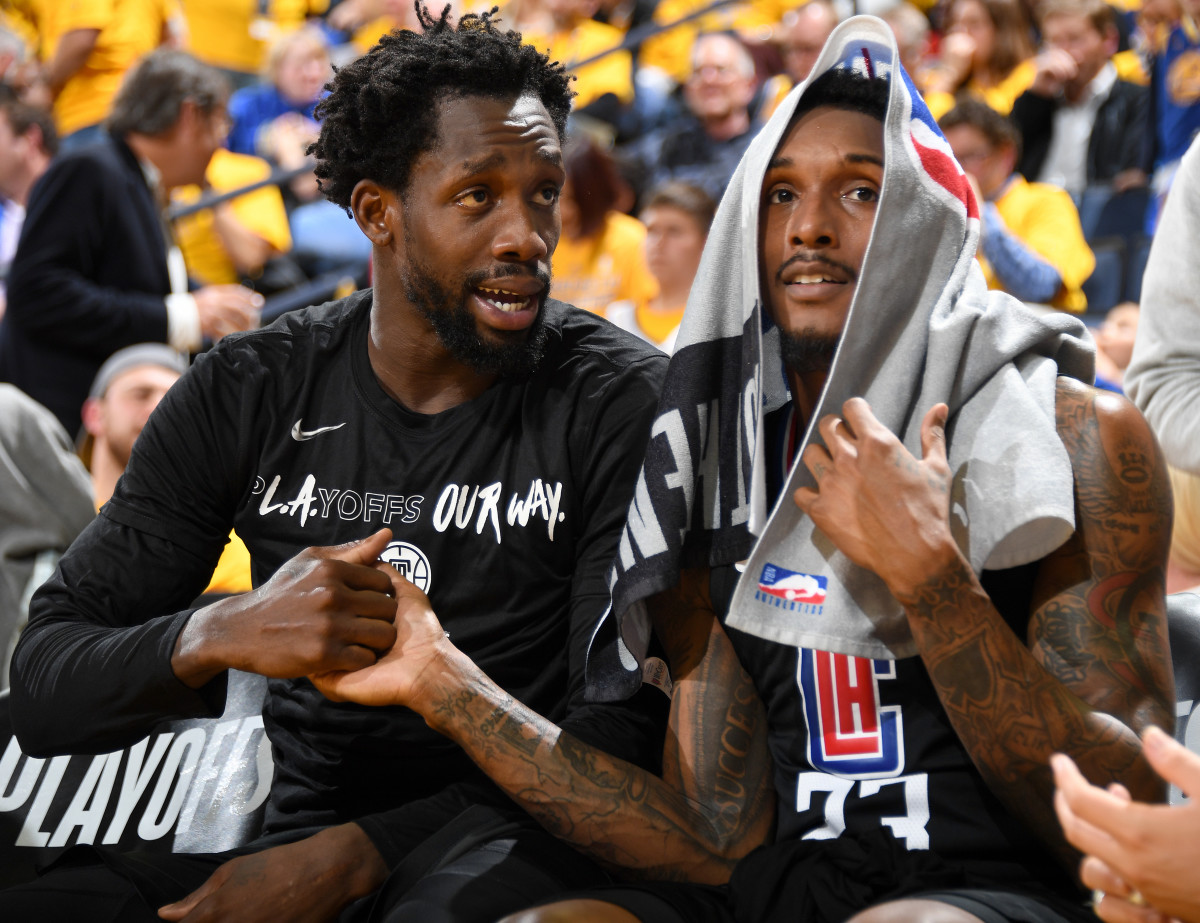How Should the Clippers' Role Players Orbit Around Their Two New Stars?

Playing for an NBA team means playing in relation to its stars. It’s the reality of a league where the very best players can shape so much of the action—enough to pull an entire game into their orbit. The new and improved Clippers now find themselves in balance between two such forces. Kawhi Leonard is the indomitable lead, skilled and physical. Paul George leapt at the chance to join him, and to see where their individual styles could meet. Every other Clipper will be responsible for finding their own fit in the tension between them.
This is quite a different existence from anything the L.A. upstarts experienced last season. Early in the season, the Clippers carefully triangulated an offense between Tobias Harris, Danilo Gallinari, and Lou Williams. Then Harris was moved at the deadline, and Gallinari traded to acquire George. Most of the roster was held over, but reimagined; if the prevailing limitation of last season’s Clippers was the lack of a star, then the very presence of any role player—say a knock-down shooter like Landry Shamet, for example—means something quite different than it did three months ago.
Every holdover player has effectively been recast. What Williams did for the Clippers’ fourth-quarter offense will now be, at best, a collaboration. There is room for him to run crunch-time pick-and-rolls and for Leonard to get to his spots and for George to find his way, but not without fluid and constant adjustment. In many ways, Williams is an ideal third scorer for a contending team: agreeable enough to roll with whatever touches he gets and skilled enough to make the most of them. Yet when he isn’t featured as a scorer, the holes in Williams’ game become slightly more pronounced. There’s a fascinating bargain at play when basketball players aren’t always allowed to do what they do best. Williams could be facing down that possibility, at least in scale.

Bringing Williams off the bench, as is customary, will give him more freedom to create. Doc Rivers will play his three scorers together plenty, but even great players can benefit from some healthy separation. Let Williams get his while one or both stars are at rest. Channel the offense through him to fill time, to protect leads, and to control deficits. Then, when they return, play the threats of Williams, Leonard, and George off of one another to break the defense. Does any team in the league have the guards and wings necessary to contain those three on the perimeter?
Or, conversely: Does any team in the league have the creators necessary to get by Leonard, George, and Pat Beverley? In lieu of the kind of third star that would make the Clippers a proper superteam, they have the components of one. All three of Williams, Beverley, and Shamet are exceptionally effective in one particular phase of the game. It’s up to Rivers to sort out who should play where and when, and in part up to the star to decide how much they’d like to accommodate that trio of guards. The best prospective lineups for the Clippers involve either George or Leonard playing power forward. It’s a tantalizing idea in theory, but a thornier one in practice. Was the fact that Toronto used Leonard selectively at the four a matter of preference or pragmatism? Did Oklahoma City largely play George on the wing because that’s where he was needed most or because that’s what he wanted most?
Considering that the Clippers were the vehicle of Leonard’s empowerment, it seems fair to assume that he could dictate the terms of his usage. If it matters to Leonard to stay on the wing, he will. The same likely goes for George, whose orchestrated push for a trade from OKC is what made signing Leonard possible in the first place. The only way to get two of the Clippers’ three top guards on the floor at any given time is for one (or both) of their stars to accept some of the physical toll that comes with playing up a position. If not, the complexion of the roster changes dramatically.

Perhaps the roster itself—and L.A.'s reported interest in Patrick Patterson as a sort of insurance—should be taken as a hint. At present, only three Clipper bigs can be slotted in as regulars: Montrezl Harrell, JaMychal Green, and Ivica Zubac. The latter can give some decent minutes in the right matchup, but proved untenable for a first-round series against the Warriors. Playing one of Leonard or George at the four could be more a matter of when than if. Harrell and Green will be nice, contrasting options as a roll man and a floor spacer, respectively, but more power forward minutes will have to come from somewhere. The recently acquired Maurice Harkless might be able to moonlight at the four, but at some point his unreliable shooting will stifle the Clippers just as it did the Blazers.
What makes this team so promising is that it already has the capacity to answer these questions. Any team looking to compete for the title will need a roster the season and a rotation that can withstand playoff scrutiny. The Clippers could have both. Leonard and George will give everyone cover as they fill more manageable roles, and will carry much of the weight in the games that matter.
As for all that precedes them, the Clippers run deeper than most. Many positions will be juggled by committee, adjusted for the needs of the night. The prescription for a particular matchup could be more time from Shamet, or Harrell, or Harkless. Should he sign, Patterson will have an opportunity to salvage his career after two hard years in Oklahoma City. Injuries might require leaning on Rodney McGruder or rookie Terance Mann in auxiliary roles. That kind of flexibility can be the difference between the first seed and the fifth seed. It is the margin between dropping a second-round series and clinching a trip to the NBA Finals.
All that’s left to do is to fit the pieces together, night after night, for the better part of eight months. It’s fair to wonder how it will look: what systems they might run, how Leonard and George will complement one another, whether there are really enough rebounders or enough bigs in general. Yet conceptually, the Clippers can be confident in that they have some of everything, including the kind of stars that allow everything to make sense. There is a need for every role player, and a role player for most every need.
